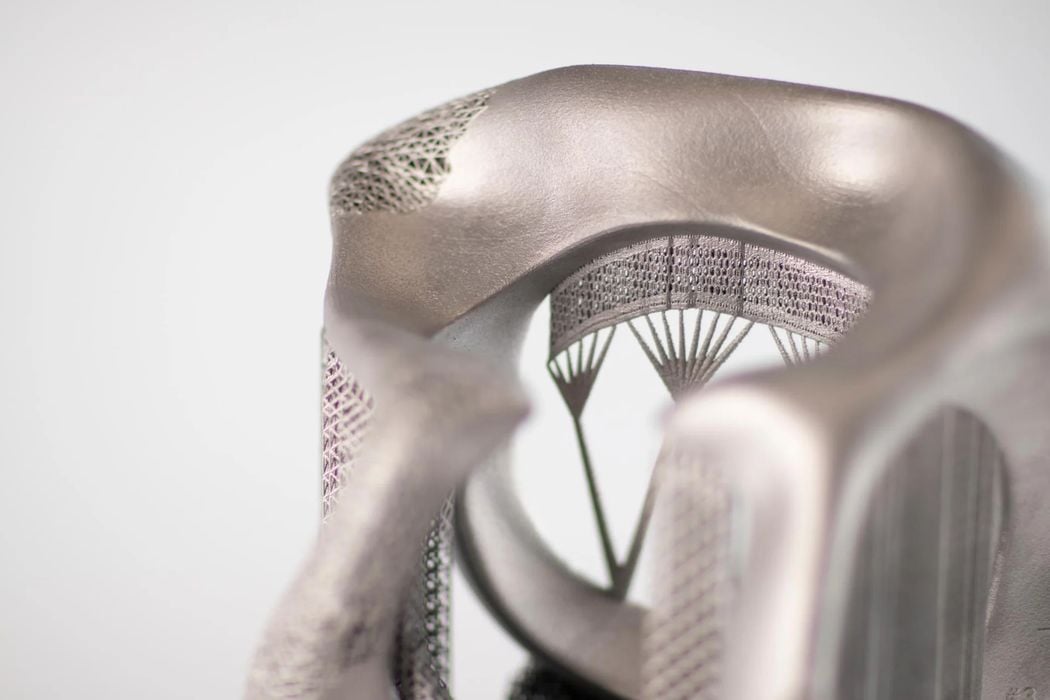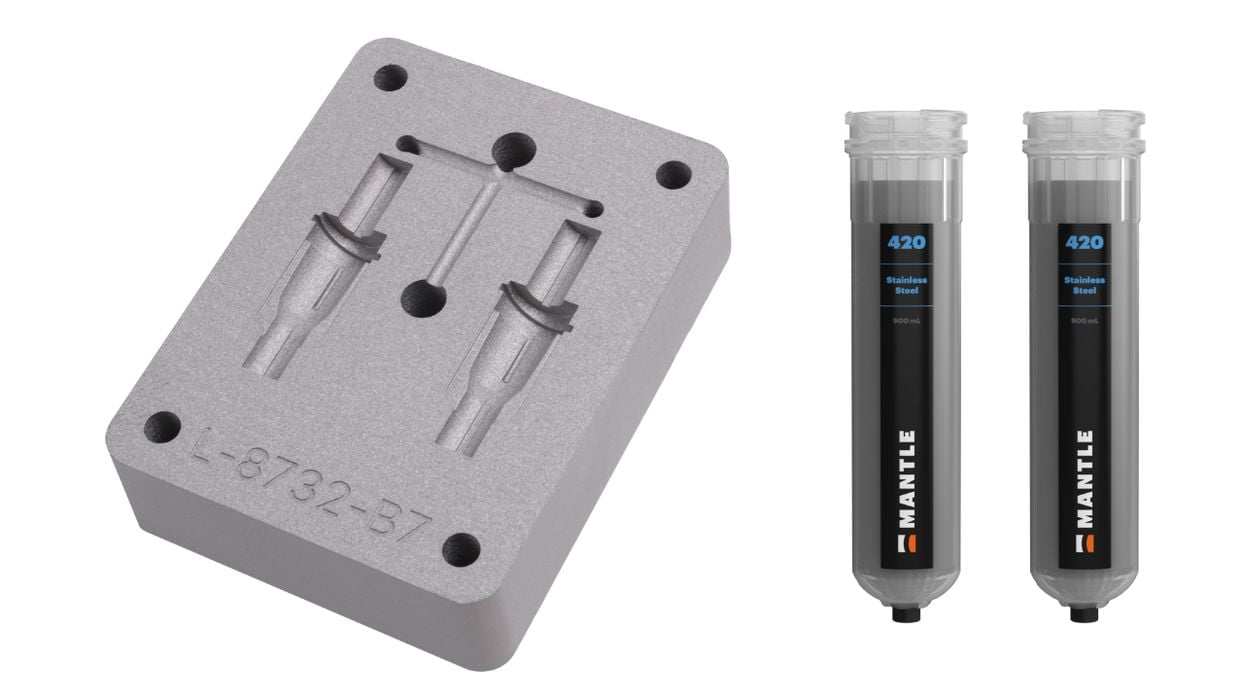
Two companies announced new metal materials for their system in the past week.
Mantle Stainless Steel
Mantle’s technology is focused on an unusual printing process they call “TrueShape”. It uses a paste extruder to precisely deposit a metal-rich layer. This is heated to remove binder and sinter the metal particles together, followed by a CNC milling action to smooth the surface. This repeats layer by layer until the object is built.
The technology has been packaged up into P-200 3D printer and F-200 sintering furnace, a step required after printing. These are designed for production applications, and it’s possible to make large quantities of metal parts with the equipment.
The company up to now has offered only H13 tool steel as the working material, but this past week they announced the availability of 420 Stainless Steel.

420 stainless steel differs from the more popular (among 3D printers) 316L stainless steel. 316L is lower in carbon content, making it more corrosion resistant. Meanwhile, 420’s higher carbon content makes it a much harder and stronger material, but it’s a bit less corrosion resistant.
This material should be ideal for certain forms of tool making, and complements Mantle’s H13 stainless steel material.
EOS Responsible Products
EOS announced a new addition to their Responsible Products portfolio: AlSi10Mg. This aluminum alloy “incorporates a minimum of 30% recycled feedstock”, making it a more sustainable material as compared to non-recycled equivalents. EOS said this material should be 25% lower in CO2 emissions.
It also has properties identical to “normal” AlSi10Mg, meaning operators can freely use the sustainable material where they previously used the less sustainable EOS material.
The company also announced a new program called “VIRTUCYCLE” to reuse polymer material and components. The program is a partnership with Arkema’s Agiplast, which uses sustainable energy to recycle additive manufacturing powder into injection molding pellets. EOS said this can save approximately 7kg of CO2 per 1kg of polymer material, which is quite substantial if grown to large volumes.
That’s likely the case as LPBF polymer equipment typically requires a ratio of fresh powder for subsequent print jobs. This means that each EOS operation will consistently produce quantities of powder that could take part in the program.
This is also why the program works. Recycling initiatives face a very difficult problem: obtaining consistent, identifiable input material. Random plastic just cannot be recycled, but here the powder will have a proper pedigree, making it an ideal source for recycling.
